Share
How a 258-Year-Old Bank is Setting New Standards for Inclusive, Human-Centered Workspaces
When you think of a traditional bank's headquarters, what comes to mind? Perhaps austere corridors, endless rows of gray desks, and the subtle hum of fluorescent lighting? Lloyds Banking Group is shattering these stereotypes with their groundbreaking new London headquarters, demonstrating how thoughtful design can transform not just spaces, but entire organizational cultures.
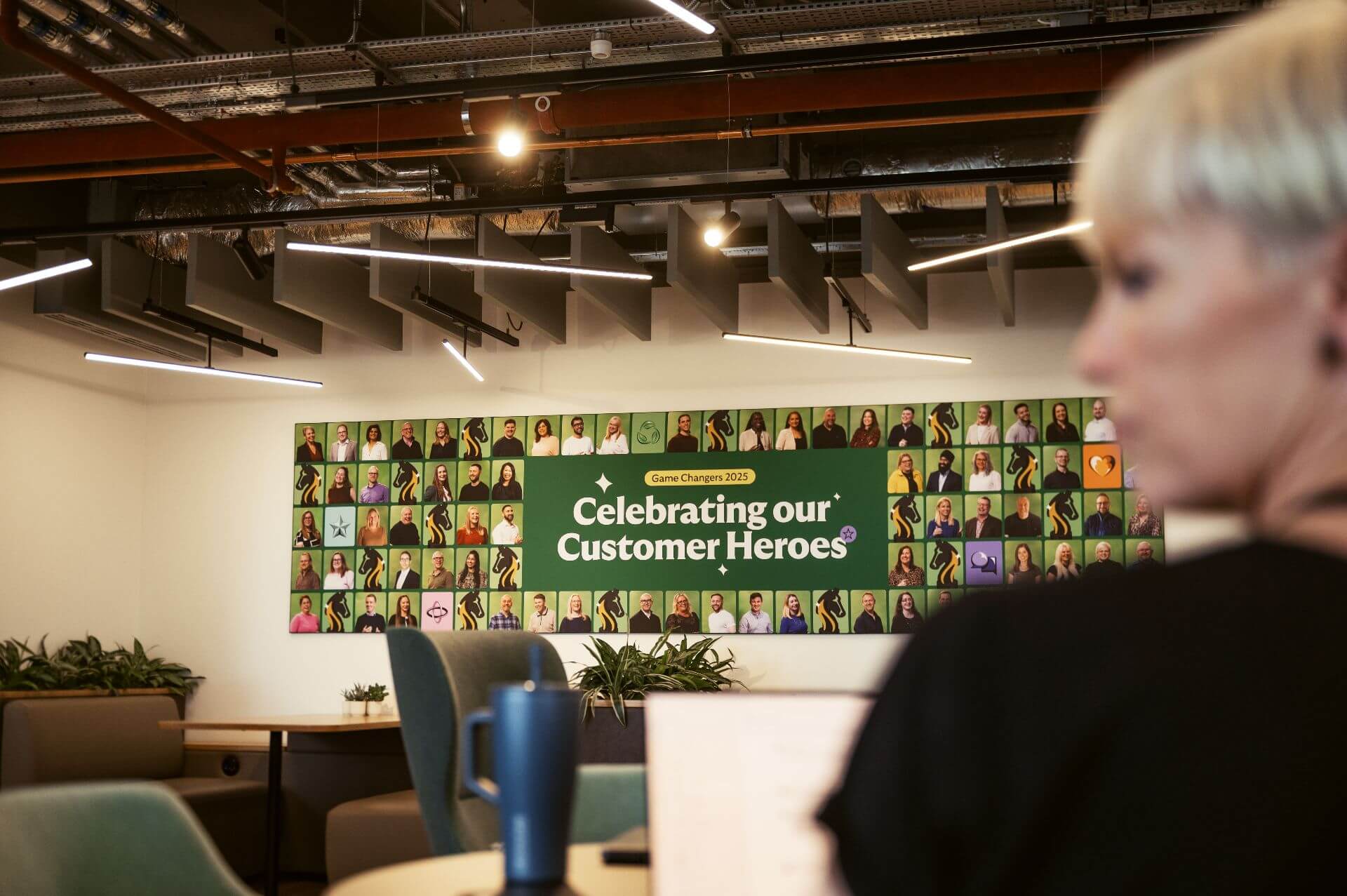
In this fascinating exploration of their flagship office, Paula Roundtree, Head of Workspace Design at Lloyds Banking Group, reveals how the 258-year-old institution is revolutionizing corporate workspace design through an unprecedented focus on inclusivity, wellbeing, and human connection.
The Challenge: Reimagining Post-Pandemic Workplace Purpose
When COVID-19 forced millions to work from home, it created an existential question for office spaces: Why should employees return when they can work effectively from their kitchen tables? For Lloyds, the answer wasn't about forcing people back – it was about creating spaces so compelling that people would want to come in.
"We had just gone through COVID, lots of people had gone home and were quite happily working at home," Paula explains. "The business was setting out what it wanted to do, needed to do for the future. We had a new CEO in Charlie and a new People and Places director with Sharon Doherty, who's been amazing."
The solution? "Fewer better buildings" – a revolutionary approach that would consolidate their real estate footprint while dramatically enhancing the quality and purpose of their remaining spaces.
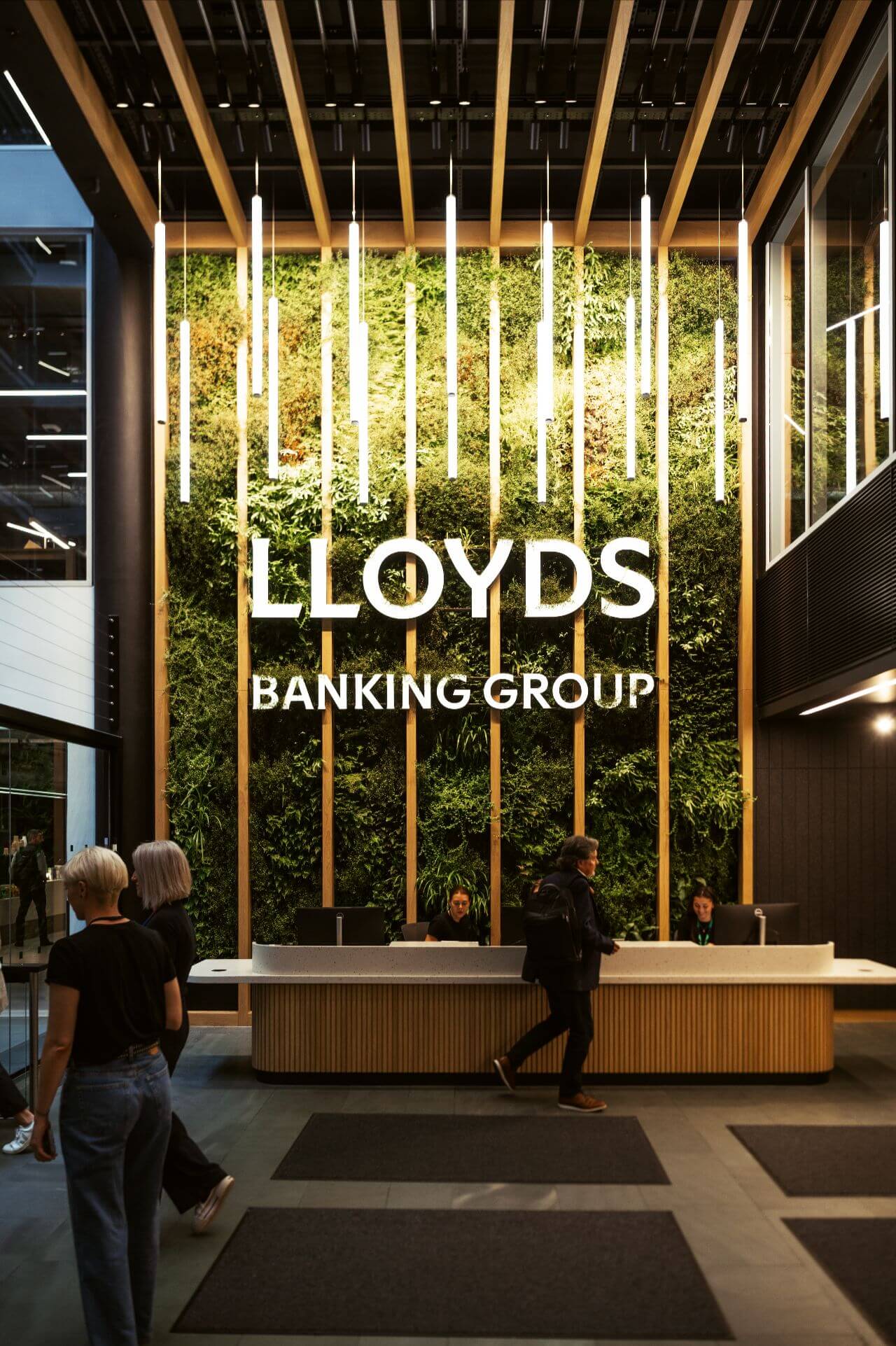
Beyond Aesthetics: The Science of Inclusive Design
What sets Lloyds' approach apart is their deep commitment to evidence-based, inclusive design. Rather than starting with aesthetics, they began by consulting with employee resource groups representing different needs – from neurodiversity to physical accessibility.
This led to innovative solutions like their "swimming pool" approach to acoustic design. Just as a pool has shallow and deep ends, their floors transition from energetic collaboration zones near entrances to progressively quieter areas for focused work. This allows employees to choose environments that match their sensory preferences and work needs.
"If somebody really doesn't like smell, they need to be as far away from the kitchen as possible," Paula explains. "If you're somebody that really values noise and vibrancy, get yourself a desk closer to the kitchen. You can pick what's the best scenario for you."

Key Design Innovations
1. The Exchange Principle
At the heart of the building sits "The Exchange" – a dramatic set of steps designed for both formal presentations and casual collaboration. Unlike traditional corporate amphitheaters, these steps include integrated wheelchair spaces that make users feel like natural participants rather than afterthoughts.
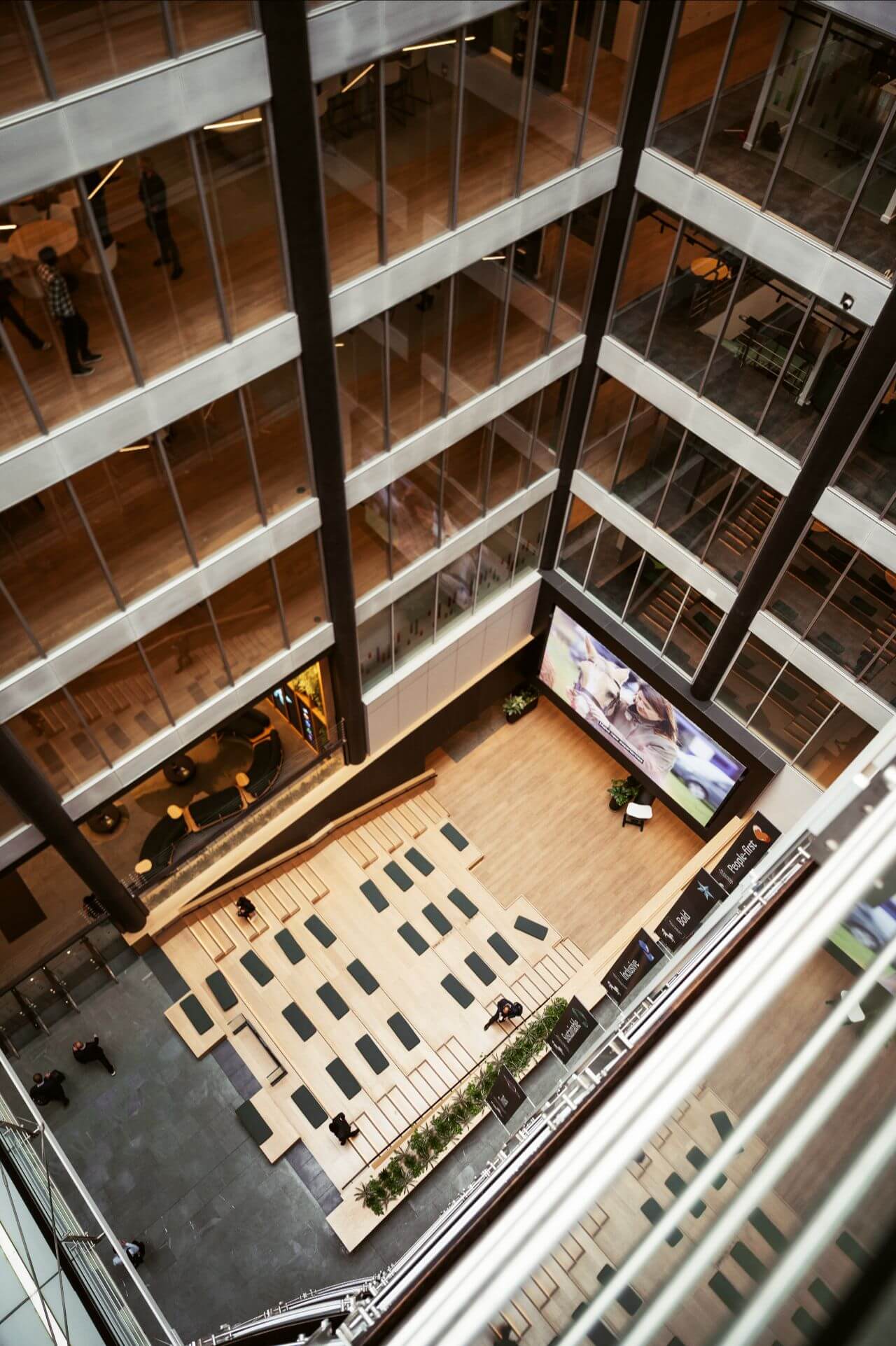
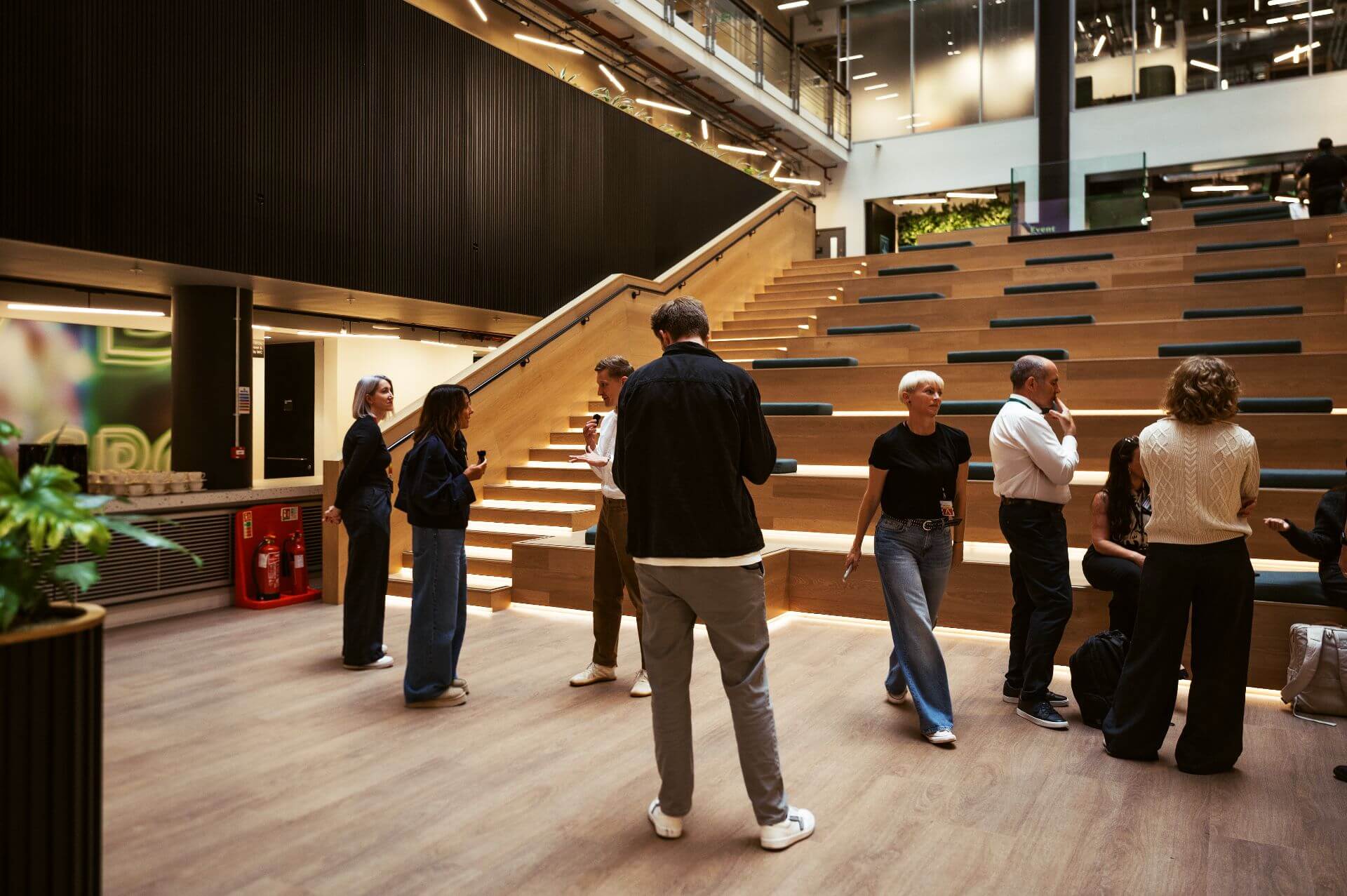
2. Wellness Zones
The office features specialized areas including:




3. Creative Problem-Solving Spaces
Taking inspiration from tech companies, Lloyds incorporated gaming rooms where teams can resolve project deadlocks through friendly competition rather than endless debates. They've also created "creative rooms" with musical instruments, art supplies, and LEGO, based on neuroscience research about cognitive breaks.
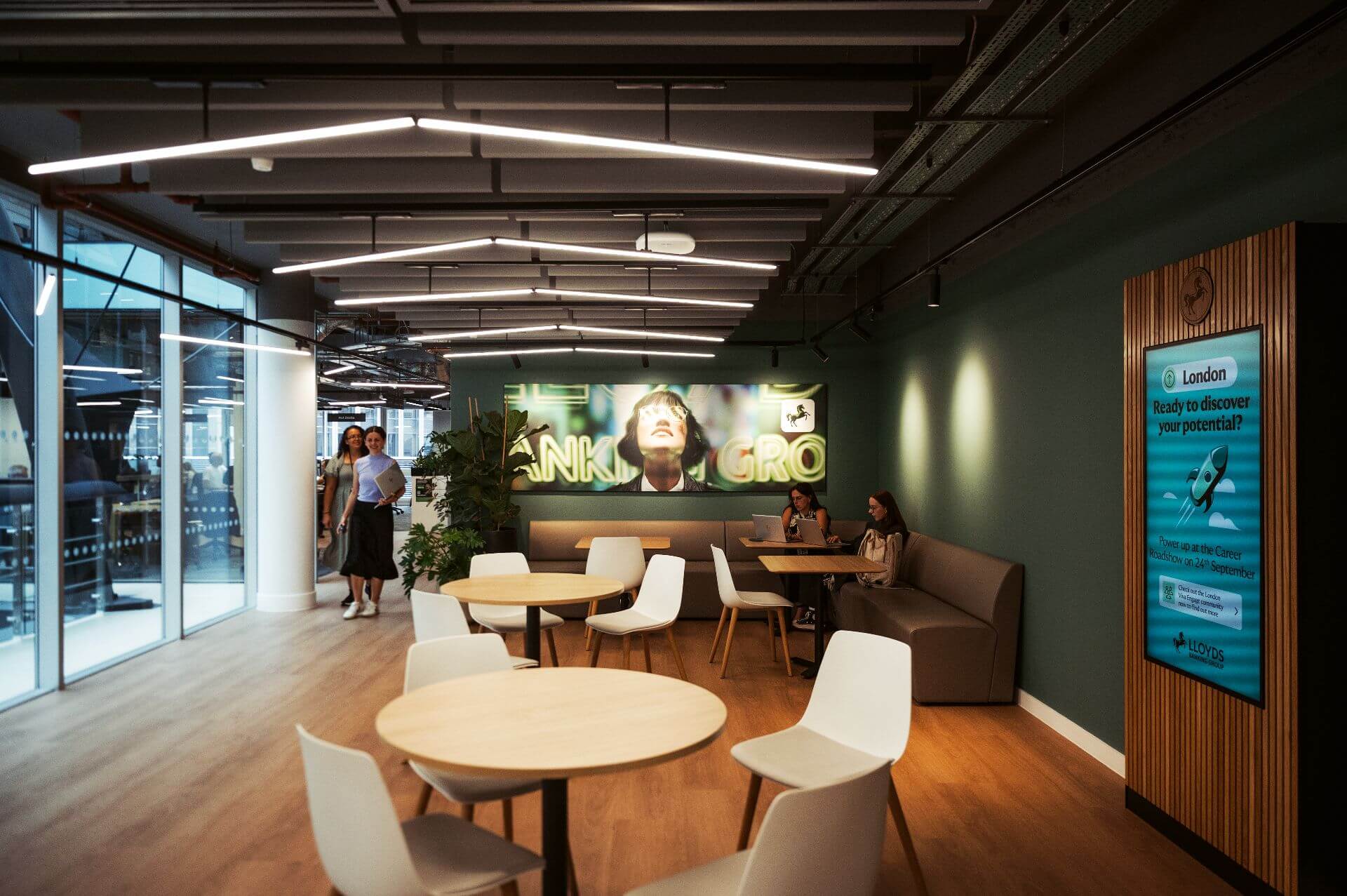
The Results: Cultural Transformation Through Design
The impact has been remarkable. In their Leeds location, 92% of employees reported that the new workspace exceeded their expectations and improved their working life. But perhaps more importantly, it's shifting perceptions of what a bank can be.
"We want people to say that we're modern and that we're cutting edge and we're digital first," Paula shares. "We want people to come and be really excited about working for us."
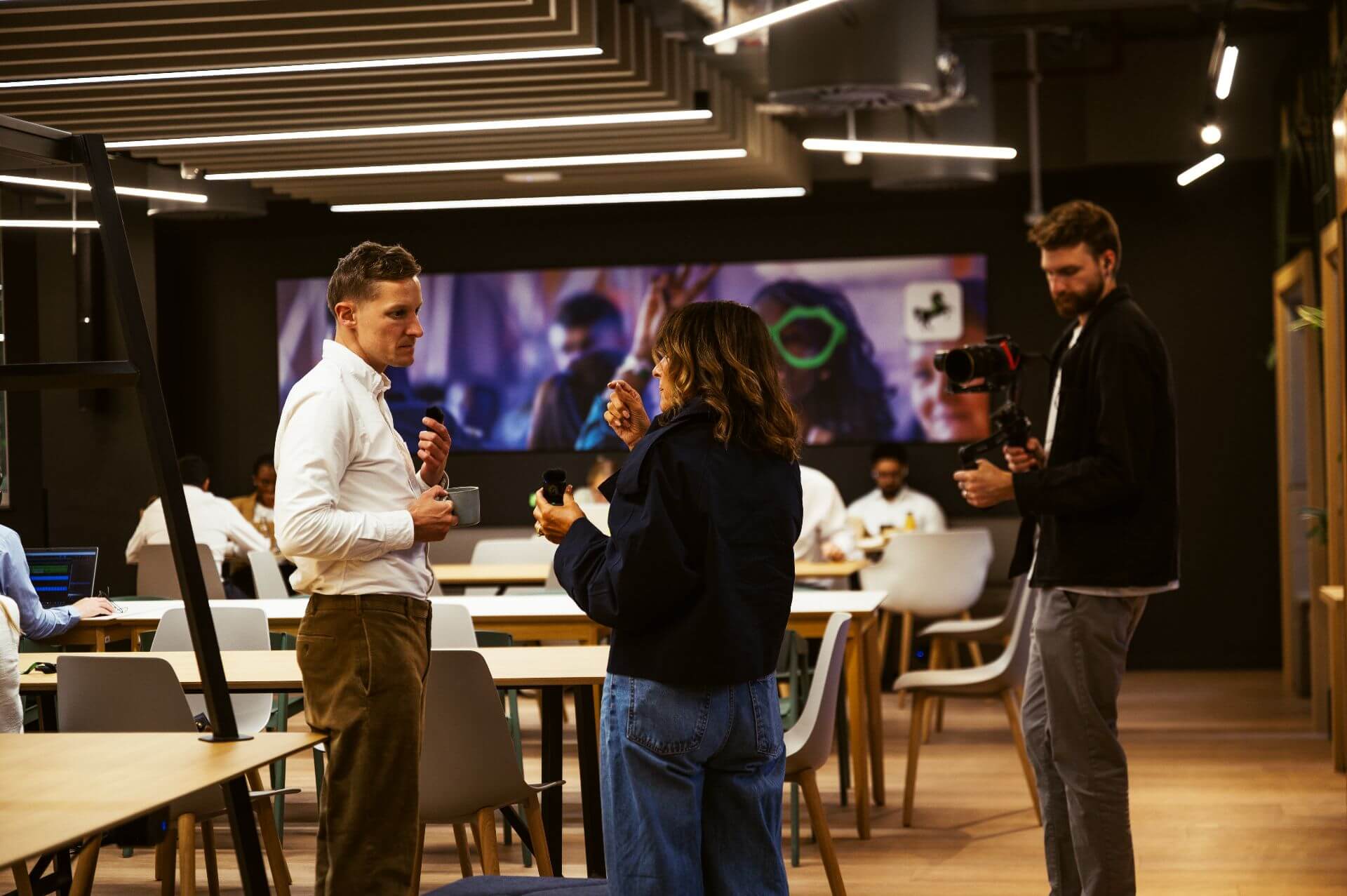


Looking Ahead: The Future of Corporate Spaces
Paula predicts that collaboration spaces will become increasingly important. "If people can really get their heads around what the purpose is of coming into the office rather than working from home, it's to actually collaborate, ideate, connect with people."


Key Takeaways for Design Professionals
1. Start with Purpose: Before aesthetics, understand how people will use the space and what problems you're solving.
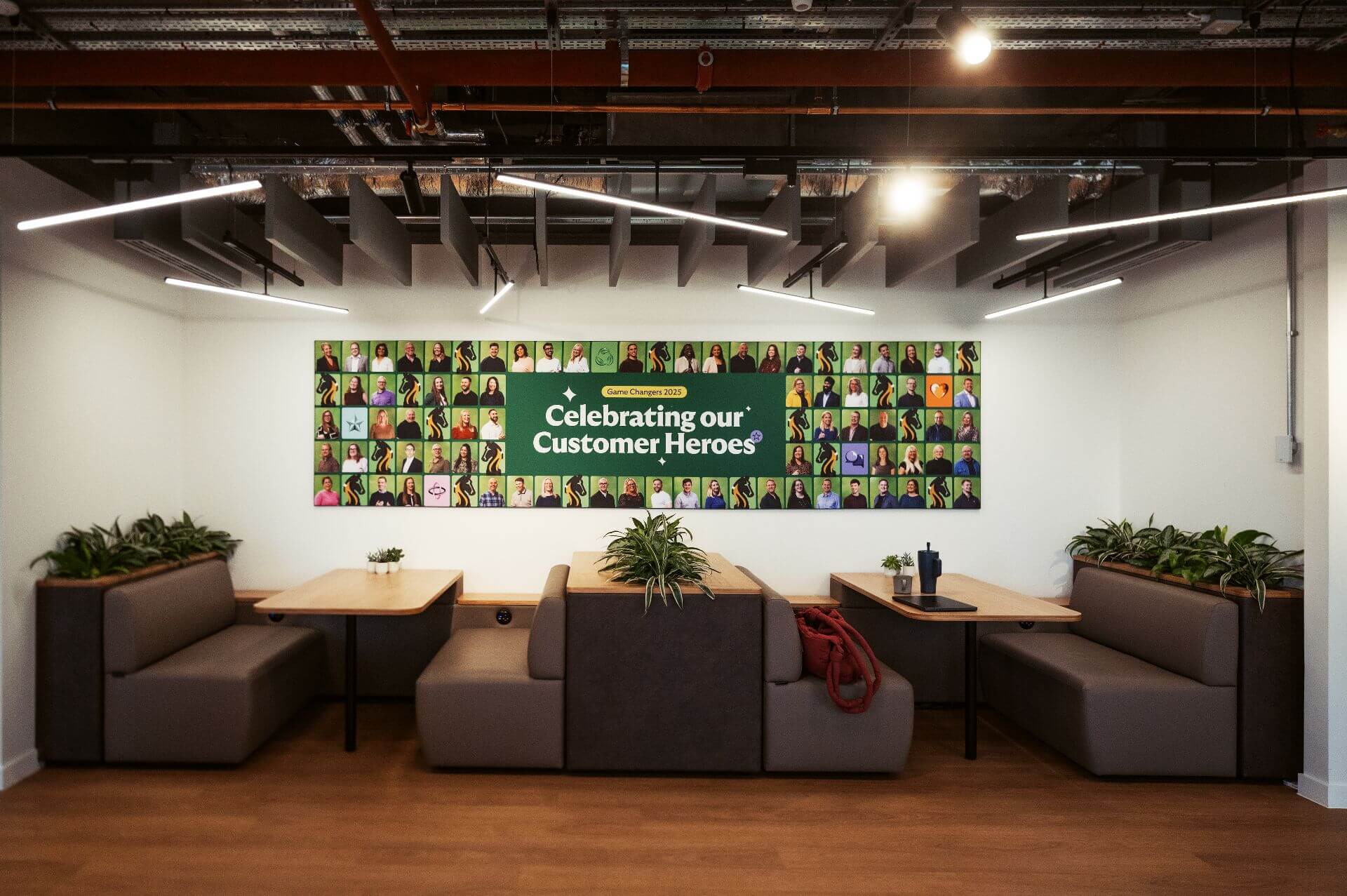
2. Design for Inclusion from Day One: Don't add accessible features as afterthoughts – integrate them seamlessly into the core design.

3. Create Choice Through Zoning: Give people agency over their environment by providing clearly defined areas for different work styles and sensory preferences.
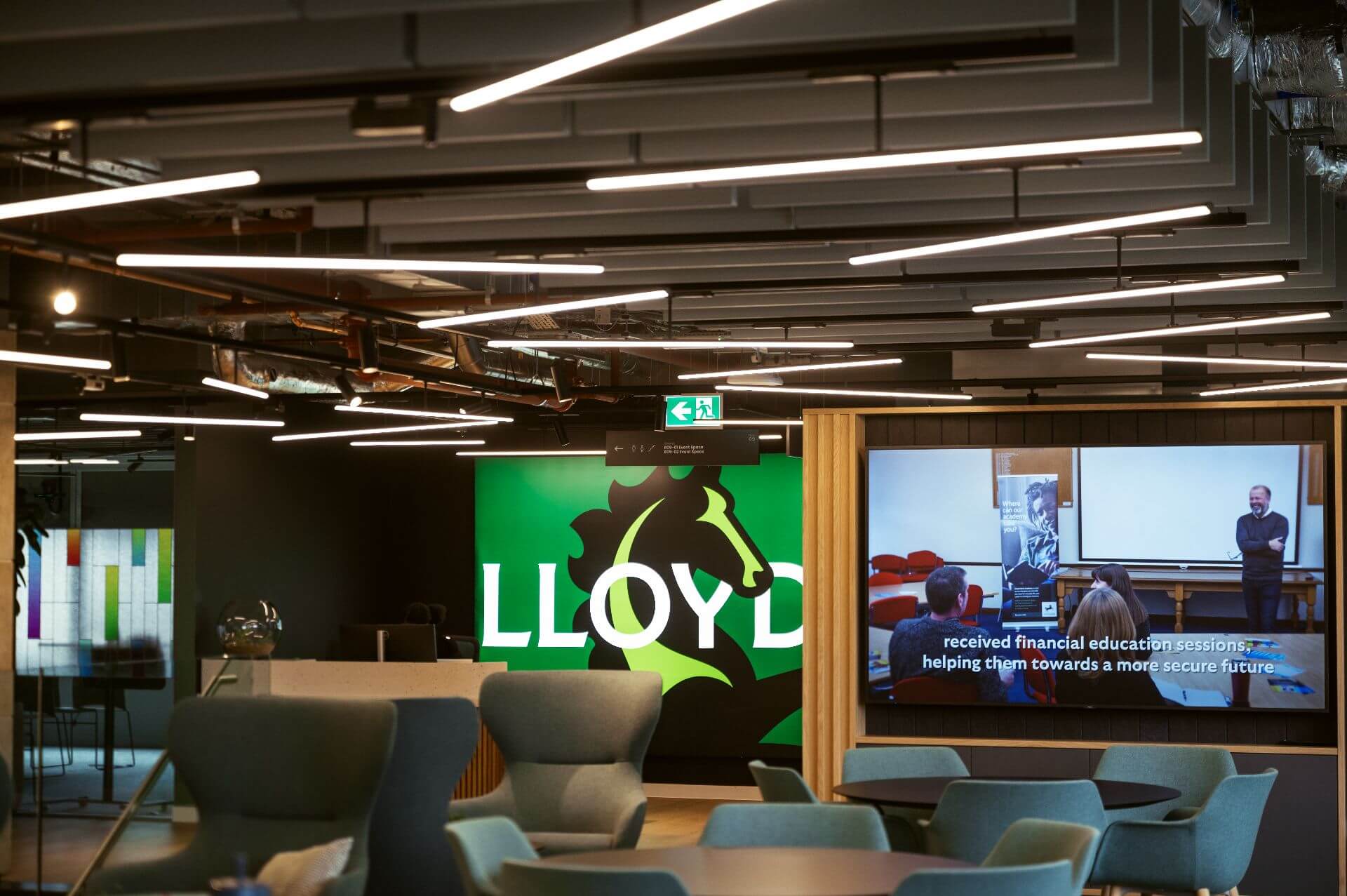
4. Balance Function and Form: As Paula emphasizes, "Good design is a balance of function and form. If you haven't got the function right, it doesn't matter how pretty it is."

This transformation at Lloyds Banking Group demonstrates that with thoughtful design, even the most traditional institutions can create workspaces that inspire, include, and innovate. It's not just about beautiful spaces – it's about creating environments that enhance human connection, wellbeing, and productivity in our evolving world of work.
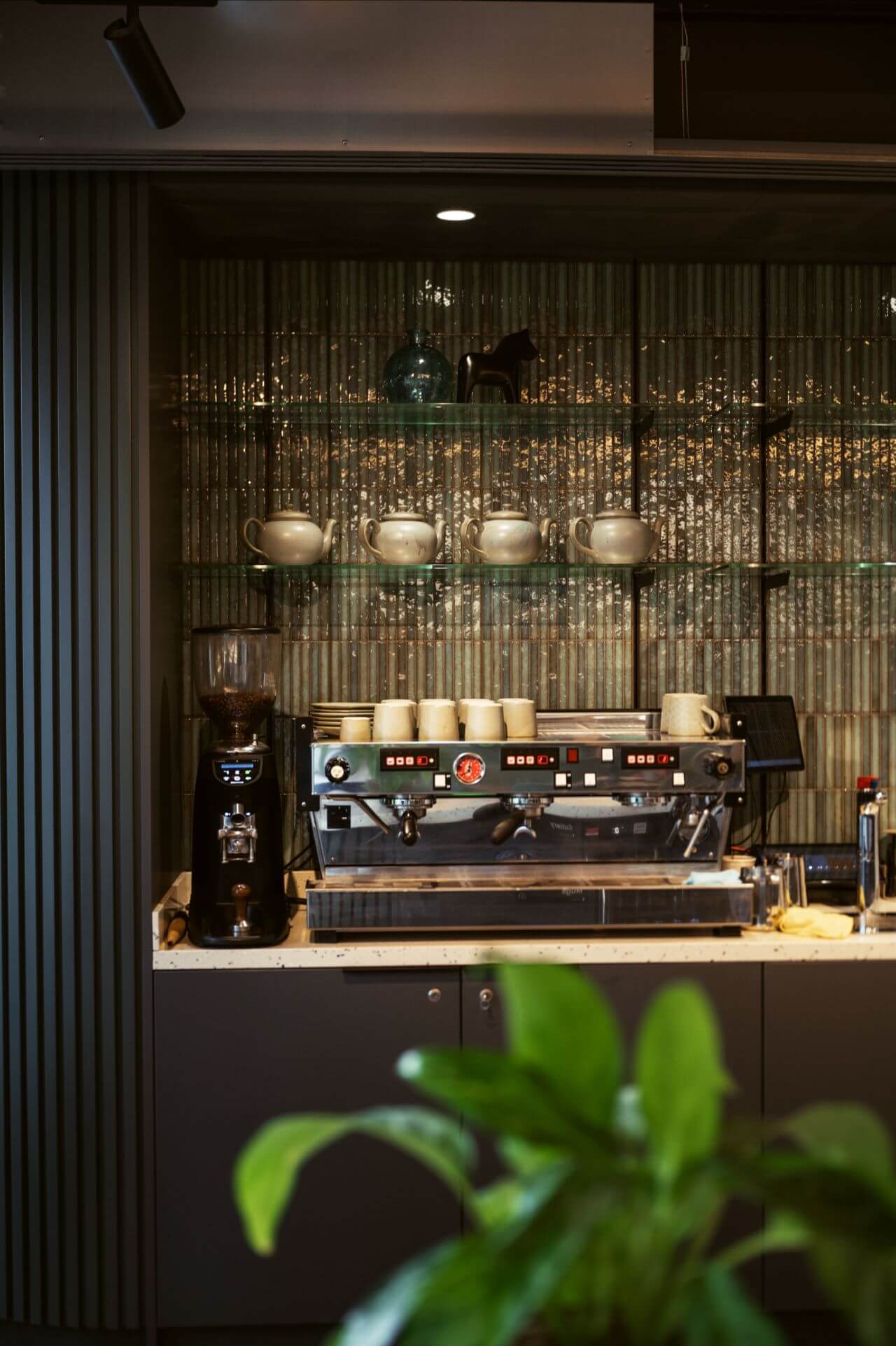

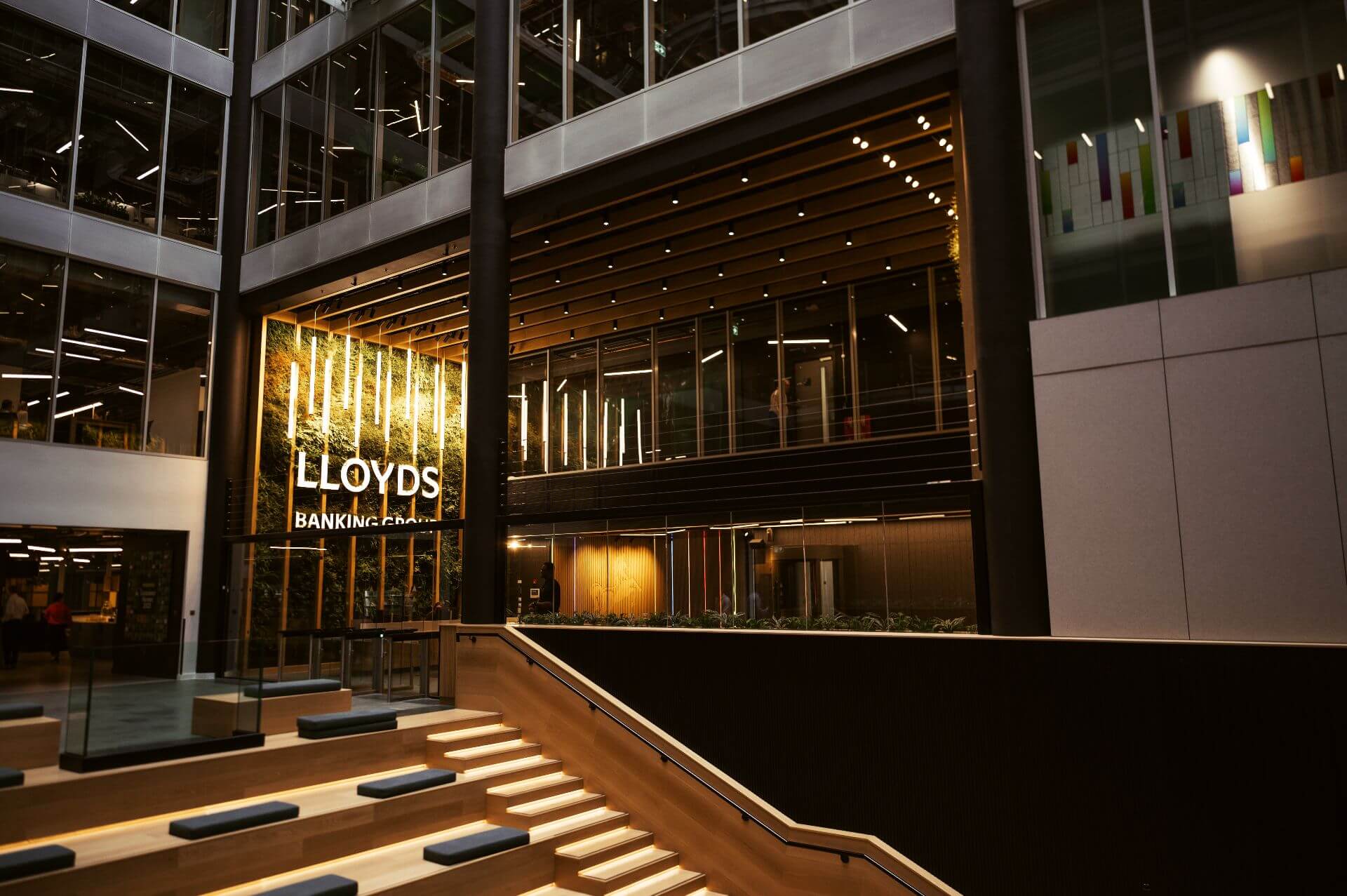
"Good design is a balance of function and form. If you haven't got the function right, and you don't understand the user or how they need their needs and how they intend to use the space, it doesn't matter how pretty it is. But if you can get the balance of the two, so functionally you really understand the space, and then aesthetically it's beautiful, it makes people feel good."